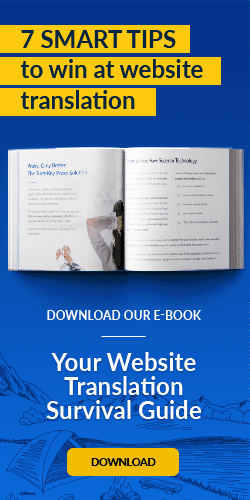Time and again, studies have shown that companies greatly benefit from increased online traffic, engagement and revenue when they publish websites in their global customers’ preferred languages.
But how do you choose a translation partner that can ensure your brand’s online success as it expands into international markets? Here are some tips that can help you find a website translation vendor worthy of your business and brand.
1. Define a Clear Project Scope
Website translation costs are often determined by word count—the quantity of words to be translated on a site. But websites feature translatable content in places that most customers (and marketers!) can’t see.
Most website translation vendors overlook words found in images, applications, metadata, and more. Since their content-detection technology is so poor, these vendors often underestimate a project’s scope. That leads to unexpected costs—and longer timelines—later in the project.
The best website translation vendors use sophisticated technology to solve this complex problem, providing an accurate cost assessment without surprises or delays.
Most website translation vendors overlook words found in images, metadata and more, underestimating a project’s scope.
2. Make Smart Choices about Translation Costs
Translation vendors often offer low price-per-word translation rates to woo prospective clients. But price-per-word is more nuanced than it looks. For example, vendors may increase the costs of other services to offset those low rates. Also consider the quality of those translations. You get what you pay for.
When choosing a translation partner, consider the actual cost associated with those translations:
- The translation process itself
- The quality of those translations
- Turnaround time
- Proofreading, editing and project management
Alluring per-word rates often signal that compromises are being made in one or all of these areas.
3. Seek Out the Highest Translation Quality
Unfortunately, not all translation vendors hire great translators—and poor translations can clobber a brand’s credibility. As a rule, best-in-class vendors have:
- Proper certification
- Industry and subject matter expertise
- The ability to authentically translate your brand’s voice
- Impeccable references
Look for vendors that can authentically translate your brand’s voice. Great references are a must, too.
4. Be Mindful of Business Models
Most solutions use applications designed to improve their internal translation process—and maximize your translation spend. This wrongheaded approach hails from legacy business models, forged in the traditional document translation era.
The best website translation vendors provide operational efficiency, cost savings, speed to market and flawless performance. They want you to succeed and expand your global reach. They clearly source their costs, too.
5. Consider Ongoing Operation
You need a solution that can immediately deliver translations for new or updated content when it’s published on your English site.
Most vendors can’t do that. Why? Creating multilingual websites requires many different processes well beyond translation, including:
- Exporting content from back-end systems
- Sending source files to translators
- Managing the translation workflow
- Receiving and copying the translated content back into your system
- Synchronizing daily changes
- And then repeating the entire procedure for all languages
Today’s best solutions can detect content changes quickly—without advance notification from the customer—and deliver fast and efficient translation, revision and publication of localized content. Turnaround of about one business day (or less) is a best practice.
6. Look for Omnichannel Options
The best vendors empower you to re-use translations for your omnichannel efforts—from PIM to email campaigns, product feeds, offline documents, social and more. Multimedia and app localization should be available, too.
Great website translation vendors can detect content changes quickly, and translate them in about one business day.
7. Avoid In-House Options
It’s tempting to handle your website translation project with in-house teams, but this usually brings more risks than benefits. In-house translators often don’t meet the high skill standards set by translation vendors. It’s also hard to effectively staff for these positions, due to wildly fluctuating translation workloads.
The best companies hire native speakers, vigorously test them pre-hire, and use ongoing translation audits to maintain quality and accountability.
But the real challenge lies in the efficient, effective management of translated content. In-house approaches require continuous effort, and generate unexpected costs well beyond translation. Investments in new technologies, or expensive technological integrations, are common. Workflows quickly become complicated and prone to error.
The best vendors have translation management technologies that address those concerns, and require no effort on your side to implement and operate. They also have the personnel to easily scale to your fluctuating translation needs.
Conclusion
As you move forward with your expansion into new online markets, remember that website translation is about far more than just “translation.”
A fluency in website technologies and online best practices—and a commitment to ethical pricing and cost savings—are vendor “must-haves.” Be sure that the translation partner you choose has the experienced staff, technical expertise and ethical standards your brand deserves.
Last updated on August 16, 2017
